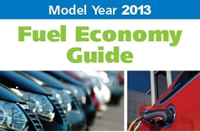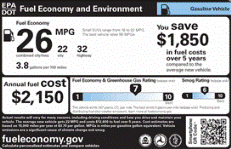Electric Vehicles (EVs)

Electric vehicles (EVs) are propelled by an electric motor (or motors) powered by rechargeable battery packs. EVs have several advantages over vehicles with internal combustion engines (ICEs):
- Energy efficient. Electric vehicles convert about 59–62% of the electrical energy from the grid to power at the wheels—conventional gasoline vehicles only convert about 17–21% of the energy stored in gasoline to power at the wheels.*
- Environmentally friendly. EVs emit no tailpipe pollutants, although the power plant producing the electricity may emit them. Electricity from nuclear-, hydro-, solar-, or wind-powered plants causes no air pollutants.
- Performance benefits. Electric motors provide quiet, smooth operation and stronger acceleration and require less maintenance than ICEs.
- Reduce energy dependence. Electricity is a domestic energy source.
EVs do, however, face significant battery-related challenges:

- Driving range. Most EVs can only go about 100–200 miles before recharging—gasoline vehicles can go over 300 miles before refueling.
- Recharge time. Fully recharging the battery pack can take 4 to 8 hours. Even a "quick charge" to 80% capacity can take 30 min.
- Battery cost: The large battery packs are expensive and may need to be replaced one or more times.
- Bulk & weight: Battery packs are heavy and take up considerable vehicle space.
However, researchers are working on improved battery technologies to increase driving range and decrease recharging time, weight, and cost. These factors will ultimately determine the future of EVs.
Electric Vehicle Videos
-
Tesla Model S
-
Ford Focus Electric
-
Nissan Leaf
-
Mitsubishi i MiEV
-
Honda Fit EV
-
MINI E
-
Audi A3 e-Tron
-
Azure Dynamics Transit Connect
-
Tesla Roadster
-
Dodge Circuit
Note: EV energy use estimated by ORNL as follows:
- Electric motor efficiency—including inverter and gear reduction losses—assumed to be 76.4–80.2%, using estimates from Miller et. al. (SAE 2011-01-0887) and adjusting downward by 4% for parasitic losses.
- Battery and battery charger efficiency are assumed to total 81% (roughly 90% each) based in part on estimates from published studies (Chae et. al., 2011; Gautam et. al., 2011).









